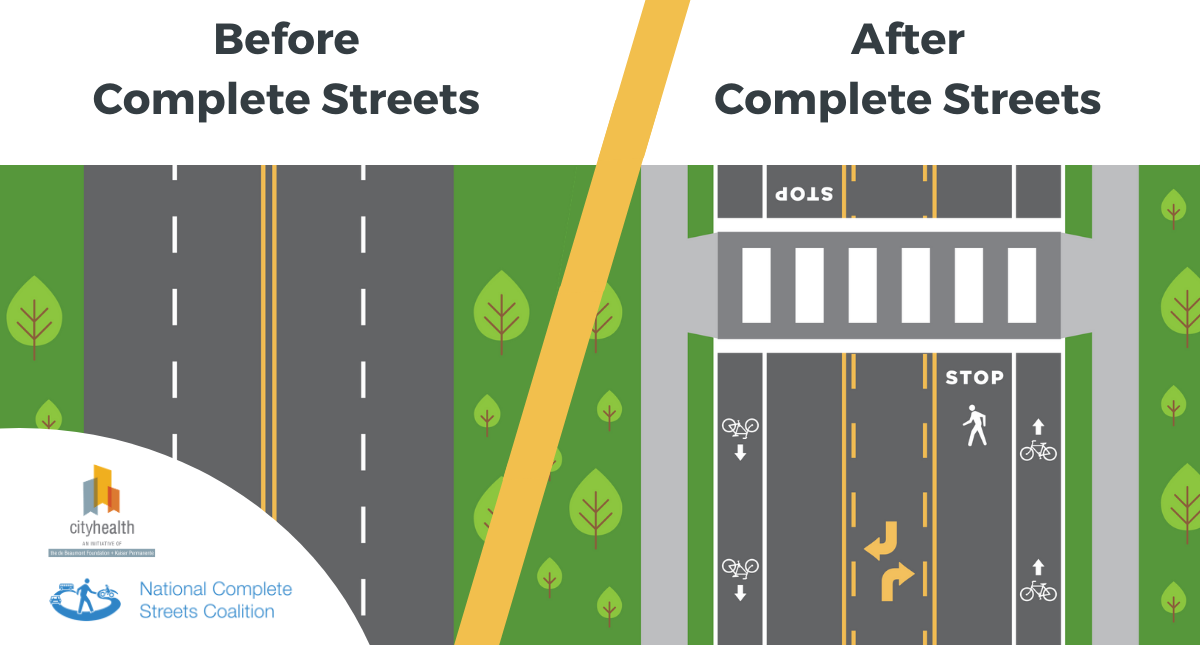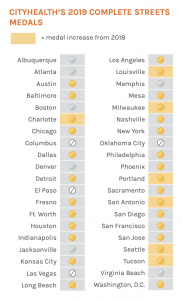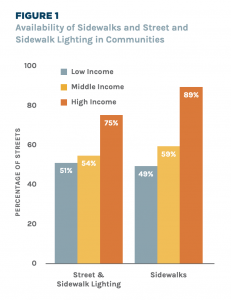
News
By Sean Doyle, August 6, 2020

 In a new report, CityHealth partnered with the National Complete Streets Coalition to evaluate the Complete Streets policies in the nation's 40 most populous cities, finding that 36 of them, or 90 percent, had medal worthy policies on the books. The other four cities—Columbus, El Paso, Las Vegas, and Oklahoma City—did not have strong enough policies in place to be awarded any medal.
In a new report, CityHealth partnered with the National Complete Streets Coalition to evaluate the Complete Streets policies in the nation's 40 most populous cities, finding that 36 of them, or 90 percent, had medal worthy policies on the books. The other four cities—Columbus, El Paso, Las Vegas, and Oklahoma City—did not have strong enough policies in place to be awarded any medal.
There’s certainly still more progress to be made, but CityHealth has charted significant advances in this report since their first city assessment in 2017, when only 16 cities had gold medal policies in place. This year, a total of 29 cities reached gold.
Fundamentally, Complete Streets make communities safer and healthier by better protecting everyone who uses the road. As we noted in Dangerous by Design, the number of people struck and killed by drivers while walking has risen in recent years, reaching levels not seen in nearly three decades. And the victims of this traffic violence are disproportionately Black and Native Americans.
 The impacts of dangerous streets are also felt more strongly within low & middle-income communities where streets have fewer design features that increase safety—like sidewalks, crosswalks, or street lights. By making streets safer and inviting for active transportation like walking and biking, Complete Streets policies can help improve people's health.
The impacts of dangerous streets are also felt more strongly within low & middle-income communities where streets have fewer design features that increase safety—like sidewalks, crosswalks, or street lights. By making streets safer and inviting for active transportation like walking and biking, Complete Streets policies can help improve people's health.
CityHealth’s report, in the same vein as our annual Best Complete Streets Policies reports, shines a spotlight on all the great work that is being done in cities across the country to retire the 1950s street design mindset and instead build great places with streets that can be safely used by everyone. Doing so is yet one more vital tool to help improve public health by making just a little bit easier for more people to be active as part of their daily lives.
But we also need to go farther and raise the bar, something that both the National Complete Streets Coalition and CityHealth are aiming to do.
Starting back in 2017 or so, the National Complete Streets Coalition started to recognize the wide variability between the passage of a policy in a community and the likelihood of that community seeing tangible change in how they build and design their streets, because of how well these policies were written, and how well they were put into practice and implemented. So after more than a decade of pushing localities to pass new Complete Streets policies and cataloguing the thousands that were subsequently passed, we released new guidance for Complete Streets policies in 2018 to more stringently grade the policies based on their concrete commitment to implementation and improving disparities.
Just as the Coalition did in 2018, CityHealth will be embarking on creating new criteria for their Complete Streets medals in 2021. We look forward to continuing our work with CityHealth and our local partners across the country pushing for safer streets and the policies that can get us there.
Related News

© 2026 Smart Growth America. All rights reserved
Site By3Lane Marketing










